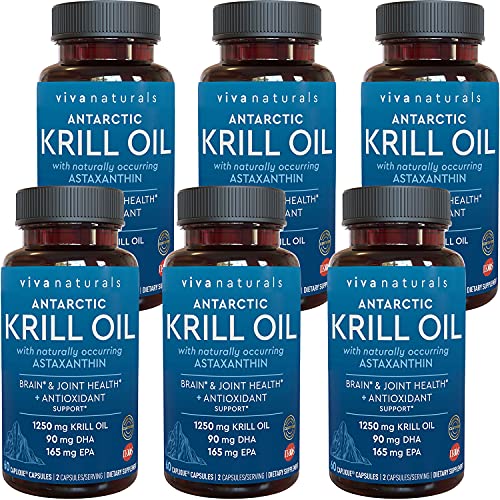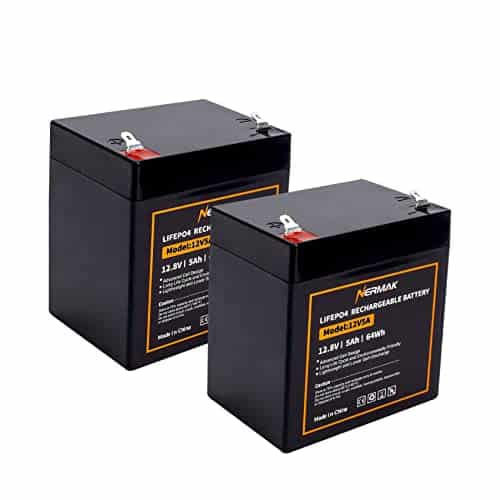Unveiling the Mysteries of 1250 Property in Real Estate
Defining 1250 Property: Origins and Current Understanding
In the ever-twisting maze of real estate, certain paths are less trodden, like the one marked ‘1250 property.’ This somewhat cryptic term originates from tax legislation and pertains to depreciable real property that’s not classified as section 1245 property. Put simply, if you’re not dealing with movable stuff like light fixtures and carpeting, you’re likely staring at section 1250 property, which includes your commercial buildings and tenant-occupied residential havens.
Examples of Section 1245 property, such as furniture and business equipment, contrast with Section 1250 property, as these are not typically fixtures of a building. On the flip side, the stuff that stays put, like the building itself and its integral parts, falls squarely under the umbrella of 1250. It’s vital to grasp this distinction, as it influences tax treatment upon sale or disposal.
The Evolution of Property Classification: How It Affects Real Estate Today
Back in the day, property classifications may have been as clear as mud. But time, coupled with some legislative elbow grease, has brought us to a clearer understanding of section 1250 property. Broadly speaking, it covers real property that’s taken a depreciation expense hit under section 167. Now, that’s a boon come tax time, but it does rope in certain expectations and tax treatments that investors can’t afford to overlook.
Transitioning to today’s savvy investor’s scene, knowing your property’s classification is more than trivia; it’s a cornerstone of tax planning. Clinging onto this knowledge could be the difference between a sunshiny financial forecast or a cloudy outcome – and nobody wants their profit margins to need a weather Disney world type of prediction, right?

Navigating Section 1250 Property in Tax Legislation
Interpreting Section 1250: Key Provisions and Taxpayer Implications
Let’s demystify Section 1250 of the tax code, shall we? It’s all about understanding the tax repercussions for the gain from selling depreciable real property. Think of it like a guardrail, ensuring you don’t whiz past without accounting for the depreciation taken over the years on your property investment. If you’re seeing dollar signs from the sale of that old warehouse, Section 1250 is standing by to have a chat about ordinary tax rates.
Comparing 1245 and 1250 Properties: Understanding the Differences
“Tomato, tomahto,” you might say, but when it comes to slapping a label on your property as either 1245 or 1250, the distinction makes all the difference come tax time. Remember, 1245 is like your favorite desk lamp – it moves when you do. But 1250 is like that trusty wall that holds the roof over your head. Mixing them up could have you wearing a not-so-happy joker smile when you trudge through your tax returns.
Antarctic Krill Oil mg, Omega EPA DHA and Astaxanthin, Joint Support and Brain Supplement with Antioxidant Properties, No Fishy Aftertaste (Pack)

$129.98
Antarctic Krill Oil is a premium dietary supplement crafted for individuals seeking a potent source of Omega-3 fatty acids, EPA, and DHA, without the unpleasant fishy aftertaste commonly associated with fish oil products. Each softgel is packed with high-quality oil derived from krill harvested sustainably from the pristine waters of Antarctica, ensuring you receive the purest form of these essential nutrients. Fortified with Astaxanthin, a powerful antioxidant, these softgels provide an added layer of protection against oxidative stress, supporting overall cellular health.
Specifically formulated for joint support and brain health, Antarctic Krill Oil helps to maintain the fluidity of cell membranes and promotes the production of beneficial prostaglandins, which contribute to the healthy inflammatory response of the body. The unique phospholipid structure of krill oil allows for better absorption of Omega-3s compared to traditional triglyceride-based fish oils, delivering more effective support for cognitive function and joint comfort. Consumers can enjoy the benefits of improved mental clarity, focus, and reduced joint discomfort, making this product ideal for those looking to enhance their overall well-being.
This Antarctic Krill Oil supplement comes in a convenient pack, perfect for maintaining a consistent routine for long-term health results. Each batch is rigorously tested for purity and potency, ensuring that you receive a product free from heavy metals, PCBs, and other contaminants. The easy-to-swallow softgels are designed to minimize any fishy aftertaste, thanks to the special encapsulation technology, so you can enjoy your daily omega-3 intake without discomfort. Whether you’re an athlete, a senior, or anyone in between, this krill oil supplement is an excellent addition to your daily health regimen.
| **Aspect** | **Details** |
|---|---|
| Definition of Section 1250 Property | Real property subject to depreciation that is not Section 1245 property (e.g., commercial buildings, rental properties). |
| Characteristics | Depreciable under Internal Revenue Code Section 167, used in a trade or business or held for income production. |
| Examples | Commercial buildings (depreciated over 39 years), residential rental property (depreciated over 27.5 years), barns, warehouses, and structural components like roofs and flooring. |
| Contrasted with Section 1245 Property | Section 1245 property includes depreciable personal property like equipment and furniture. Section 1250 property excludes these and is focused on depreciable real estate. |
| Tax Treatment on Sale | Gains are subject to recapture as ordinary income to the extent of depreciation taken. Remaining gain taxed as capital gain. Unrecaptured Section 1250 gains taxed at a maximum rate of 25%. Losses treated as Section 1231 ordinary losses. |
| Exclusions | Tangible and intangible personal properties, land acreage, and any property that does not fall under the definition of real or depreciable property. |
| Significance for Investors | Understanding the tax implications can affect investment strategy and timing of property sales. |
| Unrecaptured Section 1250 Gain | Provision that recaptures the portion of a gain related to previously claimed depreciation allowances at a maximum rate of 25%. |
| Impact on Losses | Sale of Section 1250 property at a loss results in a Section 1231 loss which is deducted as an ordinary loss, providing tax benefits by reducing ordinary income. |
| Tax Forms Involved | Typically reported on IRS Form 4797 (Sales of Business Property). Real estate professionals and property investors must navigate these forms and rules. |
Calculating Depreciation on Section 1250 Property
Unraveling the Depreciation Mechanisms for 1250 Properties
Depreciation is the slow diminishment of your property’s value over time, akin to the way your shiny new car loses its luster the moment you roll off the lot. For 1250 property, like your rental spaces or office buildings, depreciation methods might feel like you need a codebreaker. Yet, deciphering the formula is paramount to ensuring you snag the tax deductions you’re due.
Case Studies: Real World Examples of 1250 Property Depreciation
Picture this: you’ve got a rental property, probably something charming with brick walls and personality. You’ve deducted depreciation over the years because, let’s face it, that property didn’t stay shiny and new. Now, if you sold it for a handsome profit, you’d need some savvy maneuvers not to let recapture rules leave you pining for yesteryear’s tax breaks.

Tax Implications for Disposing of Section 1250 Property
Recognizing Gain: The Tax Consequences of Selling 1250 Property
Ah, the sweet victory of selling a property at a gain! But wait – don’t break out the bubbly just yet. Recognizing gain means Uncle Sam comes a-knocking for his share. A portion of that gain might be recaptured as ordinary income, subject to your regular tax rates. Not to worry, if you played your cards right with depreciation, the overall financial applause should still be for you.
Tax Strategies: Mitivating the Impact of Depreciation Recapture
Remember when you benefited from depreciation deductions? It’s time to face the music when selling. Fear not, for there’s wisdom in marshaling strategies like How To rent out Your house, inching towards installment sales, or even considering like-kind exchanges. These tactics can soften the blow from depreciation recapture, ensuring you walk away with your wallet still buzzing with joy.

Understanding Unrecaptured Section 1250 Gains
The Role of Unrecaptured Section 1250 Gains in Your Tax Strategy
There’s a special spot on the tax return for unrecaptured section 1250 gains – and it’s not just a walk in the park. This line item deals with weathering the effects of depreciation taken on 1250 property and ensures you don’t escape entirely free from taxes when you profit. Strategize well, and you can rainproof your tax parade, knowing these gains are usually taxed at a max 25% rate – a potential shelter from higher taxes on other income.
Navigating Tax Filings: Reporting Unrecaptured Section 1250 Gains
Gather ’round, because reporting unrecaptured section 1250 gains on your tax filings can be as daunting as a corn maze at twilight. Here’s where keeping meticulous records pays off more than a proof Of funds letter when snagging your dream home. It’s all about pinpointing that portion of gain which has been greased by prior depreciation, and making sure it’s reported correctly to avoid a dreaded knock from the tax authorities.
Timberland Men’s Premium Waterproof Boot (D(M) US, WheatNubuck)

$178.62
The Timberland Men’s Premium Waterproof Boot in Wheat Nubuck is a stylish and durable addition to any man’s wardrobe. Crafted with high-quality leather, these iconic boots are instantly recognizable for their robust construction and timeless design. The premium leather offers exceptional waterproofing capabilities, ensuring feet stay dry and comfortable in even the toughest weather conditions. Additionally, the seam-sealed construction enhances the boot’s ability to handle wet environments, making it a perfect match for outdoor activities or inclement weather.
These boots come equipped with a padded collar for added comfort and a lace-up closure for a secure, customizable fit. The rustproof hardware not only provides longevity and resilience but also adds a touch of rugged elegance to the boot’s aesthetic. The Wheat Nubuck color gives the boots a classic, versatile look that pairs well with everything from casual jeans to more outdoor-centric attire. Timberland’s commitment to quality means these boots are built to withstand frequent wear and provide dependable performance over time.
One of the key features of the Timberland Men’s Premium Waterproof Boot is its durable rubber lug outsole, which offers superior traction and slip resistance on a variety of surfaces. This makes them ideal for both urban exploration and more adventurous pursuits. Furthermore, the exclusive anti-fatigue technology embedded in the footbed provides all-day comfort and support, which is essential for those who spend long hours on their feet. With their combination of style, comfort, and toughness, the Timberland Men’s Premium Waterproof Boot in Wheat Nubuck is a classic choice that embodies both fashion and functionality.
Mastering 1250 Property in Special Tax Situations
Exchange Situations: 1031 Exchanges and 1250 Property Considerations
The 1031 exchange is like a high-stakes game of Monopoly, where you roll the dice to defer taxes by swapping one investment property for another. If your property is in the 1250 category, this move can be slicker than a newly-waxed floor, potentially steering you clear of immediate capital gains taxes. But tread carefully; missteps here could leave your wallet feeling a bit too light.
Opportunity Zones and 1250 Property: A Novel Tax Perspective
Venturing into Opportunity Zones with 1250 property might sound like dipping your toes into exotic waters, but here’s the kicker — it could be a masterstroke for your tax strategy. Investing here can unfurl benefits like deferring capital gains or even waiving them after a set period. It’s like finding a new twist in the game, turning what seemed like a tax maze into a snorkeling adventure with hidden treasures.

Utilizing 1250 Property in Real Estate Investment and Planning
Investment Strategies: Leveraging 1250 Property for Long-Term Growth
Investing in 1250 property isn’t just about slapping paint on walls and cashing rent checks. It’s a chess game of positioning for long-term growth, analyzing market trends, and making shrewd depreciation plays. Play your pawns right, and a property investment can transform into a wealth-building queen, steering your portfolio into a position of strength and resilience.
Estate Planning and 1250 Property: Ensuring a Favorable Legacy
Pondering your estate plan? Weave 1250 property into this tapestry, and you could leave a legacy as sturdy as the very buildings in your portfolio. It’s all about the right legal structures and tax tactics that ensure your heirs inherit more than just dusty file cabinets. They inherit opportunity, sculpted with foresight, and safeguarded from tax gales.

Fostering Insight: The Future Path of 1250 Property in Real Estate
Emerging Trends: How Changing Laws May Impact Section 1250 Property
The real estate game is no stranger to change, with laws as flexible as a gymnast on a balance beam. Keeping a hawk-eye on emerging trends could be the difference between soaring or stumbling on your property’s tax future. Whether these changes will make 1250 property as lucrative as spotting an endangered bird species or as daunting as facing a headwind, only time – and Congress – will tell.
Expert Voices: Thought Leaders Predict the Horizon for 1250 Property
Drawing on the wisdom of expert voices in the industry can be like consulting a soothsayer for your real estate ventures. These thought leaders predict shifts on the horizon that could redefine the topography of 1250 property. Hang onto their prognostications, and you might just gain the edge needed to navigate tomorrow’s terrain.
NERMAK V Ah LiFePODeep Cycle Battery Pack, + Cycles Lithium Iron Phosphate Rechargeable Battery for Solar Power,Lighting, Power Wheels, Fish Finder and More, Built in A BMS

$53.99
The NERMAK V Ah LiFePO4 Deep Cycle Battery Pack is a cutting-edge energy storage solution designed to deliver reliable, long-lasting power for a variety of applications. Utilizing the advanced chemistry of Lithium Iron Phosphate (LiFePO4), this rechargeable battery is engineered for safety and stability, offering upwards of + cycles, ensuring a prolonged lifespan and consistent performance. It is an ideal choice for those who need dependable power for solar power systems, outdoor lighting, power wheels, fish finders, and much more. Built to withstand the rigors of both high-demand and daily use, this battery pack stands out for its resilience and efficiency.
Equipped with a sophisticated Battery Management System (BMS), the NERMAK V Ah LiFePO4 Deep Cycle Battery Pack provides balanced charging and discharging, temperature control, and protection against overcurrent, short-circuiting, and overcharging. This integrated BMS helps to maintain battery health and prevent potential incidents, giving users peace of mind when powering their essential devices. The uniform discharge voltage curve means your devices run stronger and longer, making it a superior replacement for traditional lead-acid batteries. Furthermore, its compact, lightweight design ensures portability, making it an excellent companion for off-grid adventures or mobile applications.
Users of the NERMAK V Ah LiFePO4 Deep Cycle Battery Pack will appreciate its eco-friendly advantages. The battery is free from heavy metals and rare metals, making it a more sustainable choice while contributing to reducing the environmental impact. Quick charging capabilities allow users to harness solar power or other green energy sources effectively, increasing the use of renewable energy in everyday activities. Enhancing your energy independence and promoting a cleaner environment, the NERMAK battery pack is a smart investment for a greener and more energy-efficient future.
Innovations in Handling 1250 Property Tax Matters
Technological Advancements: Streamlining Tax Processes for 1250 Properties
Technological advancements are transforming tax processes for 1250 properties, making them slicker than a buttered slide. Now, cloud computing and AI don’t just live in sci-fi but are actual tools, pulling the keystone from an unwieldy tax arch. With these innovations, you can India Jones your way through the tax jungle with finesse.
Policy Shifts: Advocacy and Future Legislation Concerning 1250 Property
In the political arena, policy shifts are like chess moves, each one with potential ripples across the board. Advocacy groups are busy bees, pressing for legislative changes that could sweeten or sour the pot for section 1250 property owners. Staying alert and informed could mean the difference between your tax strategy being an ace up your sleeve or an old hat.

Harnessing the In-Depth Knowledge of 1250 Property Tax Essentials
Beyond the Basics: Leveraging Your Knowledge for Real Estate Success
Sure, it’s easy to stick to the shallow end, but diving into the deep knowledge of 1250 property can be your treasure chest at the bottom of the ocean. It’s about swinging from the vines of basic understanding to clutching the golden idol of insight. This isn’t just about being tax compliant; it’s about turning complexities into advantages that would make even a financial archaeologist proud.
Critical Analysis: Reflecting on How 1250 Property Knowledge Shapes the Market
With critical analysis lenses on, you’ll see how your know-hows in 1250 property shape the market. It’s akin to understanding weather patterns in sailing – you navigate better towards success when you see the big picture. Sharp investors use this intel to make waves in the market while others are left bailing water.
In wrapping up, the mastery of 1250 property intricacies unfurls a map where X marks many sweet spots, hidden beneath layers of legislation and tax jargon. But remember, riding the property wave is as steady as the ship pointed towards a lighthouse. Pair that with the vim of a savvy investor, and you’re charting courses even the most seasoned real estate captains would applaud. Now that you’re equipped with the 12500 property tax essentials, it’s full steam ahead!
Did You Know? Fun Facts and Tidbits about 1250 Property
Hey there, tax savvy friends! Ever wonder what’s the deal with 1250 property? Well, you’re in for a treat because this isn’t just your everyday real estate chit-chat. We’ve got some fun facts that’ll have you feeling like a property tax whiz in no time!
What’s in a Name?
First off, let’s tackle that peculiar number, 1250. Sounds like someone just pulled it out of a hat, right? Well, it’s not just any old number—it’s an IRS classification for depreciable real property. Now, that’s a mouthful, but hang tight! Essentially, it’s a way to categorize properties that can lose value over time (think wear and tear, ageing). And when it’s time to say goodbye to your property or leasehold improvements, you better believe Uncle Sam wants a piece of the action.
The Tax Man Cometh
So, you’ve played your cards right, milked your property for all its rentable glory, and now you want out. But don’t forget about that pesky pal called depreciation recapture. That’s right, you could be looking at paying the “depreciation recapture tax rate” when you sell. And let’s just say, the IRS comes a-knockin’ when it’s time to recapture that depreciation you’ve been claiming all these years. Spooky, huh? But fear not! Being in the know is half the battle, and we’ve got you covered like a warm blanket on a chilly audit night.
A Blast from the Past
Now, let’s hop into our time machines because Section 1250 property has got some old-school charm. It’s been around since 1971, just like disco and bell-bottom jeans, so it’s seen a few tax seasons come and go. It’s no dinosaur, but in the ever-evolving tax code jungle, this property classification is practically a wise old owl.
Not All Buildings Are Created Equal
Here’s where things get a tad more interesting. Not every building gets to join the cool kids’ table as a 1250 property. Nope, we’re talking about rental and commercial buildings—the kind where you’ve probably spent a good chunk of your time working or living. And before you ask, no, your dollhouse doesn’t count, even if you’ve rented it out to a family of mice.
The Silver Lining
Alright, enough doom and gloom about taxes. There’s good news, too! With a 1250 property, depreciation’s like a gift that keeps on giving… until you sell, of course. But until then, you can enjoy those tasty depreciation deductions that help reduce your taxable income each year. Isn’t that just the cherry on top of the landlord sundae?
So, whether you’re a real estate mogul or just dipping your toes into the property pool, knowing these 1250 property tax essentials can save you a headache—or better yet, some cold, hard cash at tax time. Keep these facts in your back pocket, and you’ll be impressing your friends, or at least your accountant, with your newfound tax trivia prowess!
Microchip Fabrication A Practical Guide to Semiconductor Processing, Sixth Edition
$99.81
“Microchip Fabrication: A Practical Guide to Semiconductor Processing, Sixth Edition” is an essential resource for professionals and students alike in the ever-evolving field of semiconductor manufacturing. This comprehensive guide delves into the intricate process of microchip production, covering the latest technological advancements and methodologies. The sixth edition has been thoroughly updated to reflect the cutting-edge processes and equipment being used in today’s high-tech fabrication facilities, ensuring that readers have access to the most current information in the industry.
The book offers a step-by-step breakdown of the entire fabrication process, from the raw materials and design stage through to the final packaging and testing of semiconductor devices. It introduces readers to key concepts such as photolithography, chemical vapor deposition, etching, and ion implantation, explaining the theory behind each technique while also offering practical insights into their real-world applications. The guide is rich in detailed illustrations and charts, which aids in the comprehension of complex processes and helps bridge the gap between theoretical knowledge and practical implementation.
A unique aspect of this edition of “Microchip Fabrication” is its emphasis on the environmental and economic considerations of semiconductor manufacturing. It not only teaches the reader about how to process semiconductors efficiently but also highlights the importance of sustainable practices and cost-effectiveness within the industry. Whether used as a textbook for engineering students or a reference manual for professionals, this guide is an invaluable tool for anyone looking to master the nuances of chip fabrication and stay abreast of the rapid technological changes that define the semiconductor sector.
What is a Section 1250 property?
Whoa, getting into the nitty-gritty of tax lingo, eh? Section 1250 property is basically real estate biz talk for depreciable property, like buildings or structures, that’s not just a flash in the pan—it’s the real deal, substantial stuff. This type of property isn’t your personal home—think more like an investment property, where, over time, you can write off some of its value because, let’s face it, even buildings get tired and worn out.
What is the difference between 1245 and 1250 property?
Okay, peeps, hold onto your hats, ’cause here’s the scoop: 1245 and 1250 properties are as different as chalk and cheese. Section 1245 property is generally for your movable goods—think machinery or equipment that gets banged up pretty fast. On the flip side, Section 1250 is your steadfast real property, like buildings. They both deal with depreciation but in different playgrounds.
What is an example of a 1250 property?
Picture this: a quaint little apartment building. That’s a classic Section 1250 property. It’s like a good, sturdy pair of jeans—it lasts and lasts, and you can deduct a little wear and tear over the years. It’s part of the real estate family and quietly sits there, holding onto value while providing you a pretty penny in deductions.
What is an example of Section 1250?
Under Section 1250’s umbrella, imagine a shopping center, aging gracefully as time marches on. As the owner, you get to tell Uncle Sam that it’s not the spring chicken it used to be, so a piece of its value can dip each year. This isn’t rocket science; it’s just the tax world’s way of saying, ‘Hey, things get old!’
What is Section 1245 property example?
Jump over to Section 1245 property, and you’re playing ball with things like the shiny new computers at your office – you know, the ones that turn into old clunkers after just a few years. This is the stuff you expect to trade in for the latest model faster than a kid outgrows sneakers.
Is Section 1250 property a hot asset?
Hold your horses before you get too excited—Section 1250 property may be a cool kid on the block, but a “hot asset”? Not exactly. It’s like a dependable old truck: valuable and useful for hauling in some tax benefits, but it doesn’t heat up your portfolio like some high-flying stocks might.
How does Section 1245 work?
Dive into Section 1245, and you’ll see it’s like a magic wand for reducing your taxable income. When you sell one of these fast-depreciating items, the IRS lets you recapture, or claw back, some of that loss as ordinary income. So, it’s a ‘use it or lose it’ game where the tax man cometh if you turn a profit on selling these assets.
Is Section 1250 real property?
You betcha, Section 1250 property is as real as it gets—like the Groundhog Day of real property. It includes things that are stuck to the ground for the long haul, like that brick-and-mortar storefront where you get your morning coffee. Totally real and definitely not going anywhere fast!
Is Section 1250 property a hot asset?
Well, you already asked that, but let’s drum it in: Section 1250 property, while pretty solid, isn’t really what you’d call a “hot asset.” Think of it as the comfy couch of your investment portfolio—it’s great for what it does, serving up regular depreciation deductions, but it’s not going to set the world on fire.
How are Section 1250 gains taxed?
Here’s the deal with Section 1250 gains: they’ve got their own special place at the tax table. When you sell a 1250 property for more than its depreciated value, Uncle Sam taps his foot and says, ‘Hold up, you owe some tax on that.’ Part of the gain gets taxed at regular income rates, but thanks to a fancy thing called ‘unrecaptured Section 1250 gain,’ a chunk of it might be taxed at a potentially lower rate. So, it’s a bit of a tax tango!
What is a Section 1252 property?
Alright, let’s crank up the tax jargon with Section 1252 property—it’s basically land someone’s gone and used for agricultural stuff, like planting sequoias or something. But it’s not as simple as throwing seeds in the ground; if certain soil and water conservation expenses are involved, that’s where 1252 comes into play. It’s a pretty niche field—literally!



